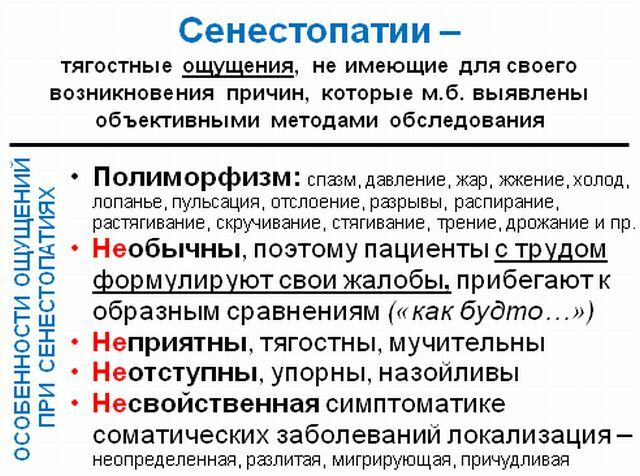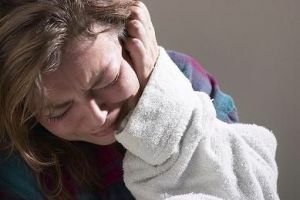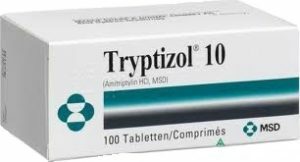 Senestopathy is a spontaneous appearance of a pathological, morbid condition that does not have a somatic base. In general, it is a disorder of the human psyche, which is expressed by unusual sensations. During the disease, painful, intrusive and unpleasant sensations are noted.
Senestopathy is a spontaneous appearance of a pathological, morbid condition that does not have a somatic base. In general, it is a disorder of the human psyche, which is expressed by unusual sensations. During the disease, painful, intrusive and unpleasant sensations are noted.
All arising sensations are devoid of objectivity. During the illness, a person's mental activity is disturbed and unusual bodily sensations are manifested. To date, this ailment has not been sufficiently studied, so doctors can not accurately answer questions about its etiology.
Based on the clinical symptoms exhibited, senestopathy is divided into several groups:
- elemental - internal sensations that do not have a specific localization;
- simple - characterized by sensations that have a pronounced modality;
- interpretative - all the symptoms that arise have very rich and varied interpretations;
- psychosensory - there is a feeling of changes in the volume and direction of the internal organs;
- hallucinatory - all sensations resemble hallucinations.

Minute of the educational program
Causes and risk factors
Senestopathy occurs exclusively for neurological and psychological reasons, which include:
- manic depression;

- psychosis;
- hysteria;
- protracted intoxications, among them alcoholism and drug addiction;
- neurasthenia and astheno-neurotic syndrome;
- hypochondria;
- neuroses of various genesis;
- organic brain damage;
- schizophrenia.
The most common cause of the disease is emotions that are not explained by doctors. But in the absence of neuropsychic disorders, the disease occurs in the form of monosymptom. To date, there are no precise reasons for such neurological disorders, which would help to identify certain patterns.
Clinic and symptoms of
disorder. Severe sensation is expressed in the form of eccentric sensations: sipping, burning, internal trembling, tingling and twisting, all these symptoms are not related to the defectiveness of internal organs and have an individual course during which their character and place of cupping often change.
In some cases, patients simply can not accurately describe what exactly bothers them. Often the disease acquires a hallucinogenic character accompanied by delirium, obsession and depersonalization.
The location of unpleasant symptoms is not typical for certain systems or organs. For example, some patients claim to feel cold or burning in the head.
Since the symptoms of the disease are not very common, this indicates that in the soreness, various mental functions of a person take part. Polymorphism of the symptoms of this disease manifests itself in various pains, heaviness, burning, electrolysis.
In most cases, patients complain of eccentric sensations in the head, more rarely in the area of the abdomen and chest, even less often in the limbs. These feelings during the disease can migrate.
 The disease has various manifestations: persistent, episodic and paroxysmal. The last kind of manifestation has symptoms that resemble reactions during a panic attack( fear of losing one's mind, etc.).Sometimes there is such a symptom as cold in the area of the skin.
The disease has various manifestations: persistent, episodic and paroxysmal. The last kind of manifestation has symptoms that resemble reactions during a panic attack( fear of losing one's mind, etc.).Sometimes there is such a symptom as cold in the area of the skin.
Very often in the area of lesions, pulsations or a sense of rupture of some organ appear. At the site of localization, there may be a sensation of coalescence or inverting of the internal organs.
Development of the disease
With the development of the disease, there is a migration of pains and the manifestation of unpleasant sensations in the various lesions. In this case, the intensity and duration of pain sensations only increases.
In some cases, the manifestation of painful symptoms can be accompanied by gestures, in the form of rubbing the place of defeat or grasping behind the head. The pain begins to migrate and at one point it can appear in the head, and in the other - in the abdomen.
Over time, delusional sensuality develops and the disorder becomes intrusive. During the development of the disease, special somatic symptoms can appear, in the form of thermal pain. The patient can feel the movement of foreign bodies or liquids in his body.
With an elementary type of pain disease, unpleasant sensations do not have exact localization, they are projected onto the person's inner sensations.
In rare cases, the disease can be isolated and not accompanied by nervous and mental disorders. With the development of the disease, patients' complaints can acquire a peculiar character.
Diagnostic criteria
Diagnosis of this disease is based on determining the nature of the patient's sensations that do not have an anatomical basis. In general, diagnosing this disease is difficult. All the patient's feelings are to be distinguished from paresthesia and hallucinations.
In the presence of diseases of the internal organs, there is a constant accurate localization of pain and a connection with the location of that or  of another organ. If a cannabis syndrome is diagnosed, similar complaints are not observed. The presence of the disease is indicated by the following symptoms:
of another organ. If a cannabis syndrome is diagnosed, similar complaints are not observed. The presence of the disease is indicated by the following symptoms:
- painful and painful sensations;
- intrusive manifestation of symptoms;
- uncertainty in the locations of sensations;
- impossibility of a specific description of complaints.
Comprehensive approach to the treatment of
The choice of method of treatment depends on the form of the disease and on the peculiarities of its course, if there are irreversible anatomical changes in the brain in persistent shestopathies, then most likely, no treatment can give a noticeable improvement. In other cases, all existing methods of therapy can have a positive effect and even lead to a full-fledged remission.
In the early stages of the development of the disease, neuroleptics and tranquilizers are used, which are able to have a fairly rapid effect.
These medications significantly reduce the activity of patients. With depression and apathy, antidepressants are prescribed. The combination of all of the above drugs in small doses is the best way to treat the disease against a background of low mood.
 There is a so-called causal therapy, which is used for senostopathies in the initial period. It consists of the use of such medicines as: Frenolone, Triftazine and Triptysol.
There is a so-called causal therapy, which is used for senostopathies in the initial period. It consists of the use of such medicines as: Frenolone, Triftazine and Triptysol.
For patients in whom the disease is accompanied by a sense of fear, electroconvulsive therapy is prescribed. When the disease is combined with the anxiety depression syndrome, gamma-aminobutyric acid and its derivatives are used. The daily dose of this remedy is 3-6 g. But treatment should be started with a dose of 1 g, gradually bringing it to the recommended level.
Of the existing antidepressants, the best result is shown by Triptysol and Melipramine. Evening intake of these drugs significantly improve the sleep of patients. The therapeutic effect comes in a few weeks after taking.
For the treatment of cenopathy in the syndrome of mental automatism, large doses of antipsychotics are used. As a rule, in the process of treatment, cenestatic automatism is first eliminated. Then, with time, delusional disorders disappear. Treatment is considered effective if the patient ceases to feel unexplained pain and discomfort.
Prevention of the disease is a timely examination of neurologists and psychotherapists. Also, to prevent disease, it is necessary to treat neuropsychic disorders, against which the disease arises.



